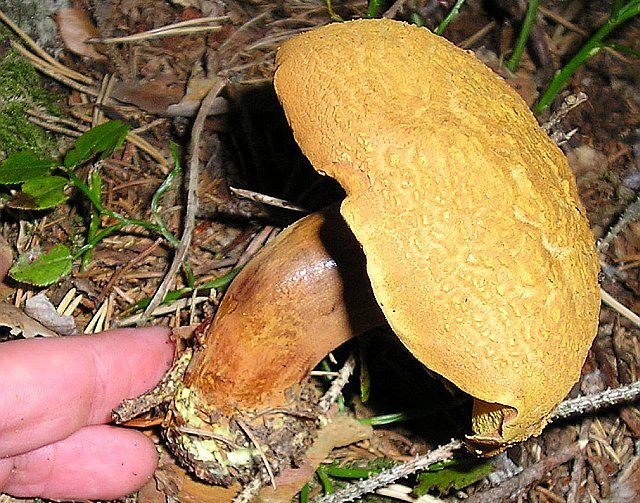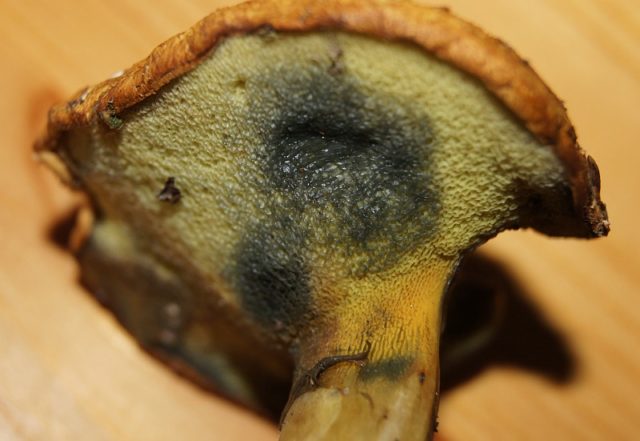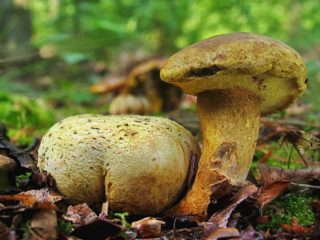Content
A very rare mushroom, which is why it has not been studied enough. The tree moss was first described in 1929 by Joseph Kallenbach. It received its generally accepted Latin designation thanks to Albert Pilate in 1969. The scientist correctly classified it and named it Buchwaldoboletus lignicola.
Buchwaldo literally means "beech forest". However, the fungus is a saprotroph of coniferous wood. This means that this part of the generic name is given in honor of the Danish mycologist Niels Fabricius Buchwald (1898-1986). The root boletus comes from the Greek. "bolos" - "piece of clay".
The specific name is derived from Lat. "lignum" - "tree" and "colere" - "to inhabit".
In scientific works the following names of the fungus are found:
- Boletus lignicola;
- Gyrodon lignicola;
- Phlebopus lignicola;
- Pulveroboletus lignicola;
- Xerocomus lignicola.
What do wood flyflies look like?
The color of mushrooms is beige, gold or brown. Young representatives of the woody flywheel are lighter in color. Olive mushroom spore powder. “Bruises” appear on injured, cut areas. They form slowly.
hat
Diameter 2.5-9 (13) cm. Initially smooth, velvety, convex. It has the shape of a hemisphere. As the fungus grows, it cracks and bends. The color becomes more saturated. The edges of the tree moss cap become wavy and slightly curled.
Hymenophore
Tubular type. The tubes inside are adherent or slightly converging. Initially they have a lemon-yellow color, then yellow-green. Easy to separate. Their length is 3-12 mm.
Pores
Arched, small. 1-3 pcs. by 1 mm. Golden or mustard (for mature mushrooms) color. Damaged ones turn dark blue.
Leg
Height 3-8 cm. Color up to reddish-brown. The circumference is the same throughout its entire length. May be curved. The thickness of the mushroom stem is 0.6-2.5 cm. The mycelium at the base is yellow.
Controversy
Elliptical, fusiform, smooth. Size 6-10x3-4 microns.
Where do moss mushrooms grow?
They grow from June to late autumn in North America (USA, Canada) and Europe. Tree flyflies are difficult to find. This is one of the endangered species in Belgium, Denmark, Finland, Germany, Norway, Sweden, and the Czech Republic. The mushroom is included in the Red Book of Bulgaria. According to biologists, the status will soon change to “endangered”.
Stumps, root bases, sawdust are places where the woody flyworm can settle. It lives in small groups on dead coniferous trees such as:
- Scots pine;
- Weymouth pine;
- European larch.
Sometimes appears on deciduous trees. For example, wild cherries.
Microscopic analysis showed that the tree flyworm parasitizes the tinder fungus, although it was initially assumed that it simply creates favorable conditions for the growth of the golden fungus.
Is it possible to eat tree mushrooms?
They are considered inedible, although they have a pleasant sweet, resinous smell and sour taste. Due to their rarity, it is not possible to study their culinary properties.
Conclusion
Wood flywheel is not eaten. It is classified as an endangered mushroom and is listed in the Red Book of some countries. Since it is not poisonous, it is not dangerous for humans, but it also cannot provide any benefit or nutritional value.




















